The Ultimate Guide to Link Building and Website Authority in 2025: Proven Strategies That Work
Link building remains one of the most critical aspects of SEO, directly influencing website authority, rankings, and trust. As we approach 2025, search engines like Google are becoming increasingly sophisticated, prioritizing high-quality content, user experience, and authoritative backlinks. This comprehensive guide will explore proven link-building strategies, emerging trends, and actionable insights to help you dominate the SERPs (Search Engine Results Pages) in 2025.
Introduction: Why Link Building Still Matters in 2025
In the ever-evolving world of SEO, link building continues to play a pivotal role in determining a website’s authority and visibility. Backlinks act as “votes of confidence” from other websites, signalling to search engines that your content is valuable, trustworthy, and relevant. However, the rules of the game have changed significantly over the years. Gone are the days of spammy link-building tactics; today, quality trumps quantity.
This guide will cover:
- The fundamentals of link building and website authority.
- Emerging trends shaping the future of link building in 2025.
- Proven strategies that work in 2025, with real-world examples.
- Tools, case studies, and actionable tips to boost your rankings.
- Advantages, disadvantages, and ethical considerations.
Let’s dive in!
What is Link Building?
Definition and Purpose
Link building refers to the process of acquiring hyperlinks from other websites to your own. These links serve two primary purposes:
- Navigation : Links allow users to navigate between pages on the internet.
- SEO : Search engines use links to crawl the web, discover new content, and rank websites based on their perceived authority.
What Are Backlinks?
Backlinks are hyperlinks from one website to another. They serve as a critical ranking factor in search algorithms, accounting for 15–20% of Google’s ranking criteria.
Example:
A health blog linking to your fitness guide signals to Google that your content is credible and relevant.
Types of Backlinks
Understanding backlink types helps tailor your link-building strategy:
- Natural Links
- Earned organically without direct effort.
- Case Study: The New York Times linked to a small sustainability blog after its viral infographic on climate change, boosting the blog’s traffic by 300% in 3 months.
- High authority; Google’s “Penguin” algorithm prioritizes these.
- Manual Links
- Acquired through outreach (e.g., guest posts, partnerships).
- Example: HubSpot’s guest blogging strategy generated 70% of its backlinks, contributing to its domain authority (DA) of 94.
- Self-Created Links
- Added manually in forums, blog comments, or directories.
- Risk: Overuse can trigger penalties. In 2020, Google penalized 4% of sites for spammy self-created links.
Why Backlinks Matter
Backlinks influence SEO success in three key areas:
1. Search Rankings
- Pages with 50+ referring domains outrank those with fewer by 220%.
- Chart:Referring DomainsRanking Probability0–1012%11–5035%50+67%
2. Referral Traffic
- High-traffic sites drive clicks. Example: A single link from Forbes to a startup’s product page increased daily visits from 200 to 2,000.
3. Trust and Authority
- Links from .edu or .gov sites (DA 80+) enhance credibility.
- Google’s E-A-T (Expertise, Authoritativeness, Trustworthiness) framework relies heavily on backlink quality.
Building High-Quality Backlinks: Proven Strategies
- Create Link-Worthy Content:
- Tools like BuzzSumo identify trending topics.
- Case Study: Moz’s “Beginner’s Guide to SEO” earned 12,000+ backlinks due to its depth and usability.
- Broken Link Building:
- Use Check My Links to find broken links on authority sites and suggest replacements.
- Skyscraper Technique:
- Improve existing top-ranking content and pitch it to sites linking to competitors.
Avoiding Pitfalls
- Low-Quality Links: Sites with spammy links (e.g., paid blog networks) risk penalties. Example: In 2012, Google’s “Penguin” update wiped out 65% of J.C. Penney’s organic traffic due to manipulative links.
- Monitor Backlinks: Tools like SEMrush or Ahrefs Backlink Checker* identify toxic links for disavowal.
Tools for Backlink Analysis
- Ahrefs (Backlink Explorer)
- Moz (Link Explorer)
- Google Search Console
By prioritizing quality over quantity and aligning with ethical practices, backlinks become a sustainable driver of SEO success.
Backlinks are essentially endorsements. When a reputable site links to your content, it signals to search engines that your page is credible and worth ranking higher.
Reference: For more details on how backlinks impact SEO, check out this Ahrefs article on link building .
Website Authority: The Foundation of SEO Success
What is Website Authority?
Website authority, often referred to as “Domain Authority” (DA) or “Domain Rating” (DR), is a metric that predicts how well a website will rank on search engines. It’s influenced by factors such as:
- Number and quality of backlinks.
- Content relevance and depth.
- User engagement metrics (e.g., bounce rate, time on page).
Tools like Ahrefs, Moz, and SEMrush provide scores to measure your website’s authority.
How to Build Website Authority
Building authority requires a combination of technical SEO, content marketing, and link building. Here are some actionable steps:
- Publish High-Quality Content : Create in-depth, original, and shareable content that solves user problems.
- Earn Backlinks : Focus on acquiring links from authoritative and relevant websites.
- Optimize On-Page SEO : Ensure your content is optimized for keywords, meta tags, and internal linking.
- Improve User Experience : Fast loading speeds, mobile-friendliness, and intuitive navigation enhance authority.
Emerging Trends in Link Building for 2025
As search engines evolve, so do link-building strategies. Here are the top trends shaping the industry in 2025:
1. AI-Powered Link Building
Artificial intelligence is revolutionizing how marketers identify link opportunities, analyse competitors, and automate outreach. Tools like Ahrefs and SurferSEO now incorporate AI to streamline these processes.
- Example : Use AI tools to analyse competitor backlinks and identify gaps in your strategy.
Reference: Learn more about AI in SEO from Ahrefs’ blog .

2. E-E-A-T Framework
Google’s emphasis on Experience, Expertise, Authoritativeness, and Trustworthiness (E-E-A-T) has made quality content and authoritative backlinks even more critical. Links from trusted sources reinforce your E-E-A-T score.
3. Zero-Click Searches and Featured Snippets
With the rise of zero-click searches, securing featured snippets becomes essential. While not a traditional form of link building, earning these positions indirectly boosts your authority.
4. Visual and Interactive Content
Infographics, videos, and interactive tools generate more shares and backlinks than plain text. In 2025, visual storytelling will dominate link-building efforts.
What are the best practices for using AI in link building
Based on the latest trends and strategies for link building in 2025, here are the best practices for using AI in link building:
AI-Powered Analysis and Insights
Leverage AI tools to analyze large volumes of data and gain valuable insights:
- Use AI-powered tools like Ahrefs, SEMrush, and Moz to identify high-quality link opportunities and analyze competitors’ backlink profiles.
- Employ AI-based modeling to predict the success rate of your link building strategies and make data-driven decisions.
- Utilize AI for real-time monitoring and tracking of backlink performance, domain authority, and traffic.
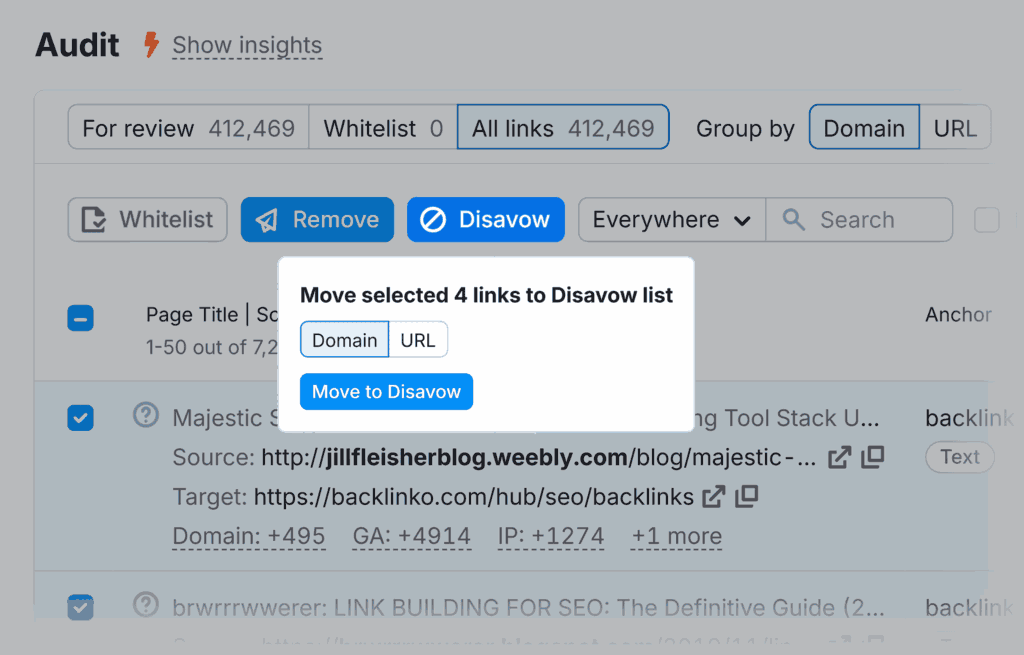
Automated Link Prospecting and Outreach
Streamline your link building process with AI automation:
- Use AI tools to identify relevant websites and industry-specific pages for potential link partnerships.
- Leverage AI for personalized outreach, adapting email templates to align with recipients’ interests and preferences.
- Automate repetitive tasks like initial outreach and contact information gathering, allowing you to focus on relationship building.
Content Optimization and Creation
Enhance your content strategy with AI assistance:
- Use AI-powered tools to suggest topics and identify content gaps that are likely to attract backlinks.
- Employ Natural Language Generation (NLG) to produce optimized, high-quality content for link building campaigns.
- Utilize AI to evaluate content quality and assess its potential for engagement and earning backlinks.
Smart Keyword Research and Optimization
Improve your keyword strategy with AI:
- Use AI-based keyword research tools to discover high-impact and long-tail keywords.
- Optimize anchor text and internal linking structure based on AI-generated recommendations.
- Leverage AI to adapt your content to voice search queries and emerging search trends.
Continuous Improvement and Adaptation
Stay ahead of the curve by using AI to refine your strategies:
- Employ AI for predictive analysis to anticipate link building trends and adapt to evolving search engine algorithms.
- Regularly review your backlink profile using AI tools to identify and address potentially harmful or low-quality links.
- Use AI-driven insights to continuously update and refine your link building tactics for optimal results.
What are the benefits of using AI for analysing competitors’ backlink profiles?
Using AI for analysing competitors’ backlink profiles offers several significant benefits:
Faster and More Comprehensive Analysis
AI tools can quickly process vast amounts of backlink data, providing a comprehensive overview of competitors’ link profiles in a fraction of the time it would take manually. This allows for more frequent and up-to-date analyses, keeping you informed of changes in the competitive landscape.
Identification of High-Quality Link Opportunities
AI algorithms can assess the quality and relevance of backlinks, helping you identify valuable link-building opportunities. By analyzing competitors’ high-quality backlinks, you can discover potential websites and content types that could also benefit your own link profile.
Pattern Recognition and Trend Identification
Machine learning algorithms excel at recognizing patterns and trends in backlink data. This capability allows you to:
- Uncover successful link-building strategies used by competitors
- Identify emerging trends in your industry’s link-building landscape
- Spot gaps or opportunities that competitors may have overlooked
Competitive Edge Through Predictive Insights
AI-powered tools can provide predictive insights, helping you anticipate changes in competitors’ strategies or identify potential future opportunities. This foresight allows you to stay ahead of the competition and adapt your link-building efforts proactively.
Efficient Resource Allocation
By automating the analysis process and highlighting the most impactful opportunities, AI helps you allocate your resources more efficiently. You can focus your efforts on high-value link-building activities rather than spending time on manual data collection and analysis.
Enhanced Strategic Decision-Making
The insights provided by AI-driven competitor backlink analysis enable more informed strategic decisions. You can tailor your content and outreach strategies based on data-driven insights about what’s working in your industry.
Continuous Monitoring and Alerts
AI tools can continuously monitor competitors’ backlink profiles and alert you to significant changes or new high-value links. This ongoing surveillance ensures you’re always aware of shifts in the competitive landscape.
By leveraging AI for competitor backlink analysis, you can gain a more comprehensive, accurate, and actionable understanding of your competitive environment, ultimately leading to more effective link-building strategies and improved SEO performance.
How does AI simplify the process of disavowing toxic links?
AI significantly simplifies the process of disavowing toxic links in several ways:
Automated Backlink Analysis
AI-powered tools like Ahrefs, SEMrush, and Moz use advanced algorithms to analyze vast amounts of backlink data quickly and efficiently. These tools can:
- Evaluate link quality and relevance automatically
- Calculate toxicity scores for each backlink
- Identify potentially harmful links that might be missed in manual audits
Intelligent Link Classification
Machine learning algorithms can categorize backlinks based on various factors:
- Link source quality and authority
- Relevance to your website’s content
- Patterns indicative of manipulative link building
This classification helps prioritize which links to consider for disavowal.
Streamlined Disavow File Creation
AI tools simplify the creation of disavow files:
- Automatically compile lists of toxic links
- Format the disavow file according to Google’s requirements
- Allow easy export of the file for submission to Google Search Console
Continuous Monitoring and Alerts
AI-driven solutions provide ongoing monitoring of your backlink profile:
- Detect new toxic links in real-time
- Alert you to significant changes in your backlink quality
- Suggest updates to your disavow file as needed
Data-Driven Insights
AI analyzes patterns and trends in your backlink profile, offering insights to inform your disavow strategy:
- Identify common characteristics of toxic links
- Suggest improvements to your overall link building approach
- Predict potential impacts of disavowing specific links
By leveraging these AI capabilities, SEO professionals can more effectively manage their backlink profiles, saving time and reducing the risk of manual errors in the disavow process.
Proven Link-Building Strategies That Work in 2025
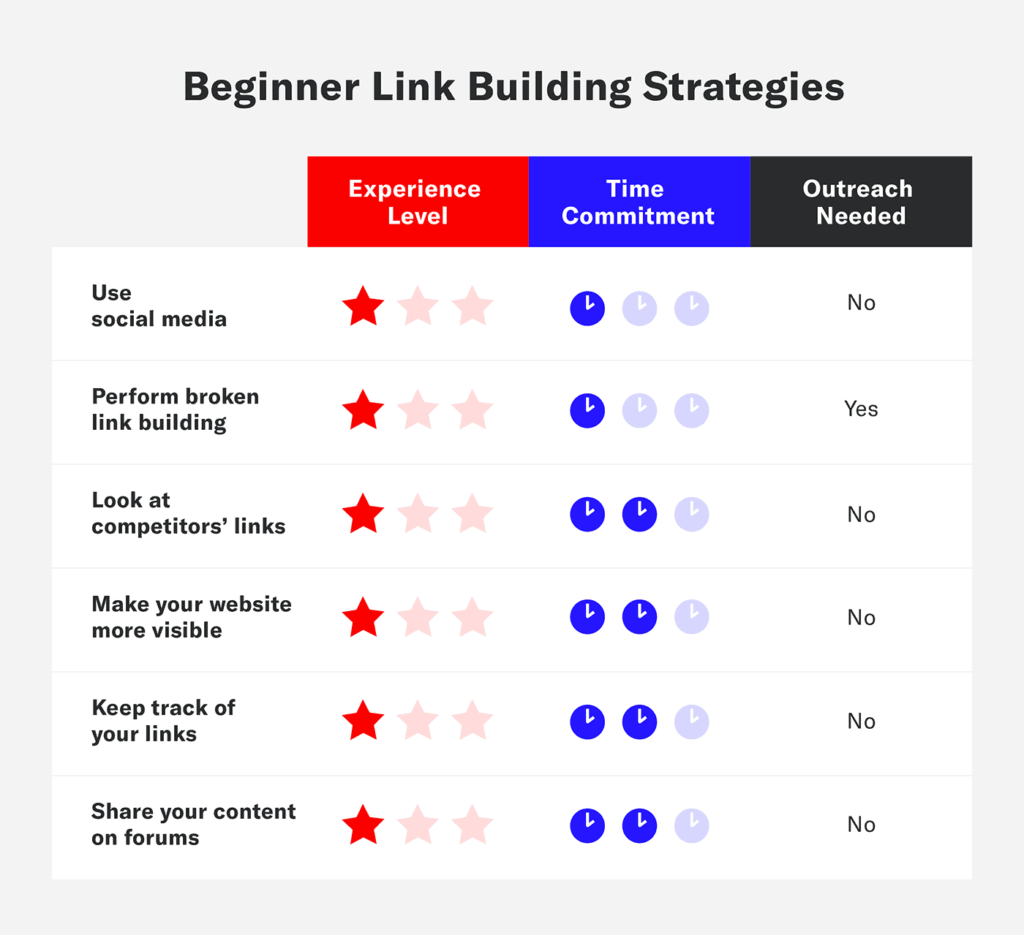
Here are some tried-and-tested strategies to build high-quality backlinks in 2025:
1. Guest Blogging
Writing guest posts for authoritative blogs in your niche remains one of the most effective ways to earn backlinks.
- Steps :
- Identify relevant blogs using tools like Ahrefs or BuzzSumo.
- Pitch unique topic ideas that align with their audience.
- Include a contextual link back to your website.
- Example : Neil Patel frequently contributes to platforms like Forbes and Entrepreneur, earning valuable backlinks.
Reference: Explore detailed guest blogging tips in this Ahrefs guide .
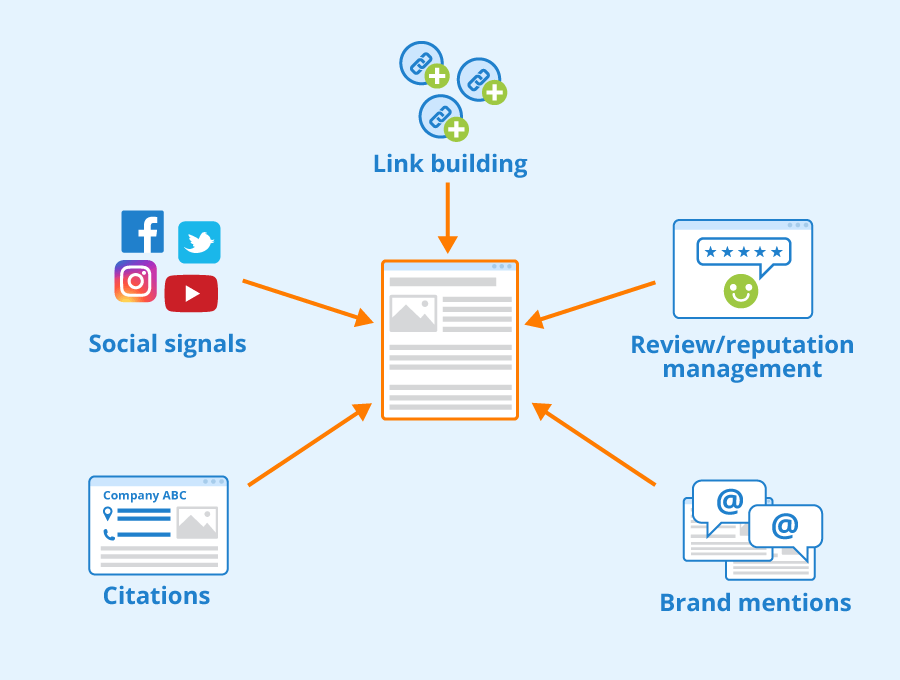
2. Broken Link Building
Find broken links on authoritative websites and suggest your content as a replacement.
- Process :
- Use tools like Ahrefs or Check My Links to identify broken links.
- Reach out to webmasters with a polite email offering your resource.
- Case Study : A small business owner used broken link building to secure 50+ high-quality backlinks, boosting organic traffic by 40%.
3. Skyscraper Technique
Brian Dean’s Skyscraper Technique involves finding popular content in your niche, creating something better, and reaching out to websites linking to the original piece.
- Steps :
- Research trending topics using tools like BuzzSumo.
- Create superior content with added value (e.g., updated stats, visuals).
- Contact webmasters and pitch your improved version.
4. Broken Link Building
Strategy: Find broken links on relevant websites and offer your content as a replacement.
Example: Identifying outdated blog posts or resources and suggesting your updated version.
5. Resource Page Link Building
Strategy: Identify resource pages in your niche and reach out to be included.
Example: Contacting websites with “best tools” or “top services” lists and requesting a mention.
6. Local Link Building
Strategy: Build links from local businesses, directories, and community sites.
Example: Listing your business on local directories, chamber of commerce sites, and community forums.
7. Influencer Outreach
Strategy: Partner with influencers in your niche to promote your content and earn links.
Example: Collaborating with a popular blogger or YouTuber to create content that includes a link to your site.
8. Podcasts and Interviews
Strategy: Participate in podcasts or interviews where you can mention your website.
Example: Being a guest on a niche-related podcast and including your website in the show notes.
9. Webinars and Online Events
Strategy: Host or participate in webinars, providing valuable insights and including links in the presentation or follow-up materials.
Example: Hosting a webinar on a trending topic in your industry and including a link to your website in the registration process.
10. Social Media and Content Promotion
Strategy: Use social media platforms to promote your content and encourage sharing.
Example: Sharing your latest blog post on LinkedIn, Twitter, and Facebook groups relevant to your niche.
11. Email Outreach
Strategy: Directly reach out to relevant website owners, influencers, or bloggers with personalized messages requesting a link.
Example: Sending a personalized email to a blogger who has mentioned a similar topic, offering your content as a valuable resource.
12. PR and Media Outreach
Strategy: Use public relations to earn coverage and links from media outlets.
Example: Issuing a press release about a significant achievement or announcement related to your business.
13. Link Reclamation
Strategy: Identify unlinked brand mentions and reach out to request a link.
Example: Finding websites that mention your brand without linking to your site and politely requesting a link.
14. Partnerships and Collaborations
Strategy: Partner with other businesses or organizations to create content that can be co-promoted, earning links.
Example: Collaborating with a non-profit organization to create a joint campaign or event.
15. Technical SEO Audits
Strategy: Conduct a technical SEO audit to identify and fix issues that may prevent earning links.
Example: Ensuring your website is mobile-friendly, has a clear site architecture, and is free from broken links.
Case Studies: Link Building Success Stories
Case Study 1: Ahrefs
Overview: Ahrefs used a combination of comprehensive research studies, guest posting, and influencer outreach to build a strong backlink profile.
Results: Ahrefs consistently ranks high for competitive SEO keywords and has a domain rating of 98, indicating high authority.
Reference: Ahrefs’ Link Building Guide
Case Study 2: Moz
Overview: Moz focused on creating high-quality, educational content and actively engaging with the SEO community to earn links.
Results: Moz is recognized as an authority in the SEO industry, with a strong backlink profile and high domain authority.
Reference: Moz’s Beginner’s Guide to SEO
Case Study 3: SEMrush
Overview: SEMrush leveraged its suite of SEO tools to create data-driven content and insights, which were promoted through various channels to earn links.
Results: SEMrush has a robust backlink profile and is considered a leading authority in the digital marketing space.
Reference: SEMrush’s SEO Blog
The Role of AI in Link Building
AI-Powered Link Building Tools
AI is increasingly being used to automate and enhance link building efforts. Tools like Clearscope, MarketMuse, and Frase.io help identify content gaps, optimize for SEO, and generate content ideas that are more likely to attract links.
AI in Content Creation
AI can assist in creating high-quality content by generating ideas, optimizing headlines, and even writing initial drafts. This can save time and ensure content is tailored to attract links.
AI for Outreach
AI can analyse recipient behaviour to craft personalized outreach emails, increasing the likelihood of a positive response and link acquisition.
What are the key metrics to measure the success of link-building campaigns?
Quantity and Quality of Backlinks
- Total number of backlinks earned
- Number of unique referring domains
- Quality of backlinks (from authoritative and relevant sites)
Domain and Page Strength
- Domain Strength/Authority (measures overall site credibility)
- Page Strength (evaluates individual page effectiveness)
Traffic and Engagement
- Increase in organic search traffic
- Referral traffic from backlinks
- Click-through rates and impressions
Keyword Rankings
- Improvements in rankings for target keywords
- Tracking of ranking shifts pre- and post-campaign
Relevance and Context
- Relevancy of linking websites to your niche
- Quality of anchor text used in backlinks
Link Diversity
- Mix of different types of backlinks (e.g., editorial, guest posts, directories)
- Variety in linking domains and IP addresses
Conversion Metrics
- Increase in conversions or desired actions from referral traffic
- Overall impact on business goals (e.g., leads, sales)
Toxicity and Health
- Toxicity score of acquired links
- Overall health of the backlink profile.
Link Velocity and Growth Rate
- Track the rate at which you’re acquiring new backlinks
- Monitor the growth of your backlink profile over time
- Compare your link velocity to industry averages and competitors
- Positive link velocity indicates a healthy, growing backlink profile
- Sudden spikes in link velocity may trigger spam filters, so aim for steady growth
- Use tools like Ahrefs or Moz to visualize your link growth over time
Link Retention Rate
- Measure how many of your earned links are maintained over time
- Calculate the percentage of links that remain active after 3, 6, and 12 months
- Identify patterns in link loss to improve retention strategies
- High retention rates indicate quality links and content
- Low retention may signal issues with content relevance or link quality
- Regularly audit your backlink profile to catch and replace lost links
Brand Mentions and Co-occurrences
- Track unlinked brand mentions across the web
- Monitor co-occurrences of your brand name with relevant keywords
- Measure the impact of link building on overall brand visibility
- Increased brand mentions can indicate growing authority and recognition
- Co-occurrences help establish topical relevance for your brand
- Use tools like Google Alerts or Mention to track brand citations
Social Signals and Engagement
- Monitor social shares and engagement resulting from your backlinks
- Track increases in social media followers and interactions
- Measure the correlation between social signals and link-building success
- Strong social signals can amplify the impact of your backlinks
- Engaged social audiences can lead to more natural link acquisition
- Use tools like BuzzSumo to track social engagement metrics
Content Performance Metrics
- Analyze the performance of content that attracts the most backlinks
- Track metrics like time on page, bounce rate, and pages per session for linked content
- Identify common characteristics of your most link-worthy content
- High-performing content can inform future content creation strategies
- Low engagement on linked pages may indicate a mismatch between link source and content
- Use Google Analytics to dive deep into content performance metrics
Link Placement and Visibility
- Evaluate the position of backlinks within the linking page
- Assess the visibility and prominence of your backlinks
- Monitor the use of appropriate anchor text and surrounding context
- Links placed in prominent positions (e.g., body content) tend to carry more weight
- Contextually relevant links are more valuable than generic sidebar or footer links
- Use tools like Screaming Frog to analyze link placement on referring pages
Competitor Comparison
- Benchmark your link-building progress against key competitors
- Identify gaps and opportunities in your backlink profile compared to competitors
- Track your share of voice in terms of backlinks within your industry
- Regular competitor analysis can reveal new link-building opportunities
- Understanding your competitive position helps in setting realistic goals
- Use competitive analysis tools in SEO platforms to gain insights
Link Acquisition Cost
- Calculate the cost per acquired link for different strategies
- Compare the ROI of various link-building tactics
- Track the efficiency of your link-building efforts over time
- Lower acquisition costs indicate more efficient link-building processes
- Consider both monetary and time investments in your calculations
- Use project management tools to track time and resources spent on link building
Domain Rating Distribution
- Analyze the distribution of backlinks across different domain rating ranges
- Aim for a healthy mix of high, medium, and low authority links
- Track improvements in the overall quality of your backlink profile
- A diverse range of linking domains indicates a natural link profile
- Focus on increasing the proportion of high-authority backlinks over time
- Use SEO tools to visualize your domain rating distribution
Topical Relevance Score
- Assess the topical relevance of your backlinks to your niche
- Track improvements in your site’s topical authority
- Monitor the alignment between your content themes and backlink sources
- Highly relevant backlinks contribute more to your topical authority
- Use AI-powered tools to analyze content relevance and semantic relationships
- Aim to build a strong association between your brand and key industry topics
By incorporating these additional metrics and considerations into your link-building analysis, you’ll gain a more comprehensive understanding of your campaign’s effectiveness. Remember that successful link building is not just about quantity, but also about quality, relevance, and the overall impact on your site’s authority and visibility in search results. Regularly reviewing these metrics will help you refine your strategies and achieve better results in the dynamic landscape of SEO in 2025 and beyond.
What are the most effective AI tools for detecting spam links?
Based on the latest information from 2025, here are some of the most effective AI tools for detecting spam links:
Machine Learning-Based Tools
- SpamAssassin: This open-source tool uses a combination of machine learning, rule-based filtering, and Bayesian filtering to identify spam messages. It’s highly customizable and can be integrated with various email systems.
- TensorFlow: While not a dedicated spam detection tool, TensorFlow can be used to create custom spam detection models using deep learning capabilities. It’s highly customizable but requires expertise to implement effectively.
- DeepSpam: This AI-based tool leverages deep learning techniques to identify and block spam messages across various platforms, including email and messaging apps. It offers high accuracy and multi-channel support.
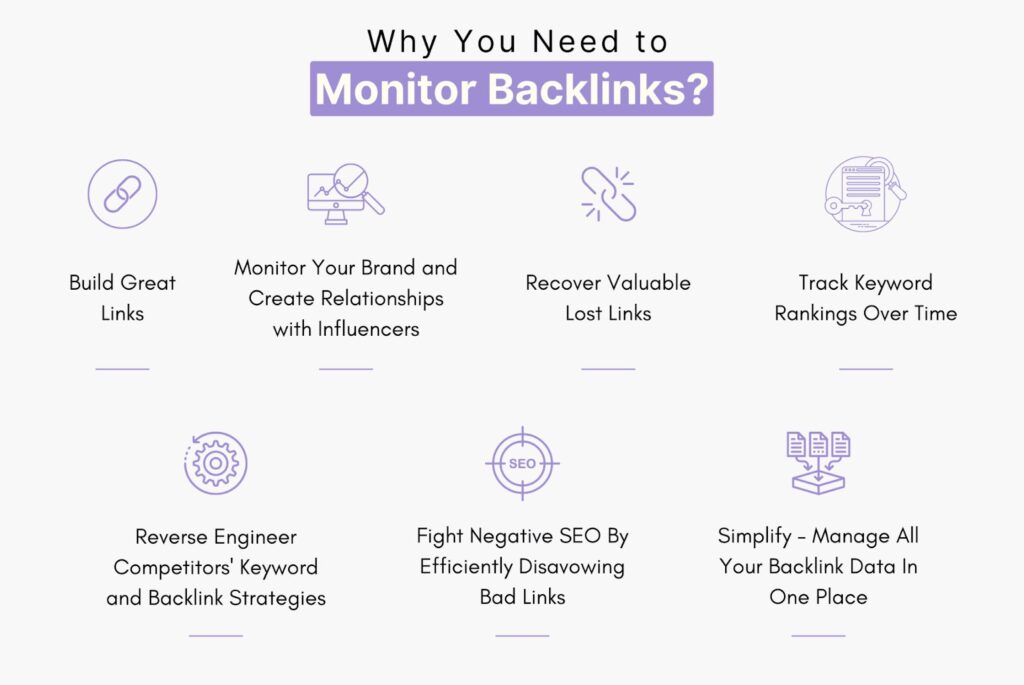
Natural Language Processing (NLP) Tools
- NLTK (Natural Language Toolkit): This Python library provides tools for natural language processing, which can be applied to spam detection by analyzing text content and context.
- TextRazor: While not specifically mentioned for spam detection, this NLP tool could be adapted to analyze text content for spam characteristics.
Cloud-Based Solutions
- Google Cloud Natural Language: This service can be used to analyze text content for spam indicators using advanced NLP techniques.
- Microsoft Azure Text Analytics: Another cloud-based solution that can be applied to spam detection through text analysis.
Specialized Spam Detection Tools
- SpamTitan: An AI-driven spam filter that protects email systems from spam, phishing, and malware. It offers flexible deployment options and advanced filtering capabilities.
- Akismet: While primarily known for comment spam detection, Akismet uses machine learning to analyze and filter various types of spam content.
- Graphus: Although primarily focused on phishing detection, Graphus uses AI to analyze email communications and can be effective in identifying spam links as well.
These tools leverage various AI techniques such as machine learning, deep learning, and natural language processing to detect spam links effectively. The choice of tool depends on specific needs, technical expertise, and the scale of implementation required.
Advantages and Disadvantages of Link Building
Advantages
- Improves search engine rankings.
- Drives referral traffic.
- Builds brand authority and trust.
Disadvantages
- Time-consuming and resource-intensive.
- Risk of penalties for low-quality links.
- Requires continuous effort to maintain results.
Future of Link Building in 2025
As we look ahead to 2025, the landscape of link building is poised for significant transformation. Search engines like Google are becoming increasingly sophisticated, prioritizing user experience, ethical practices, and content relevance. To stay competitive, marketers must adapt their strategies to align with these emerging trends. Below, we explore three key pillars shaping the future of link building—User Intent , Sustainability , and Transparency —with actionable insights, examples, and case studies.
- User Intent : Aligning content with searcher intent.
- Sustainability : Building long-term relationships rather than quick wins.
- Transparency : Ethical practices will take precedence over manipulative tactics.
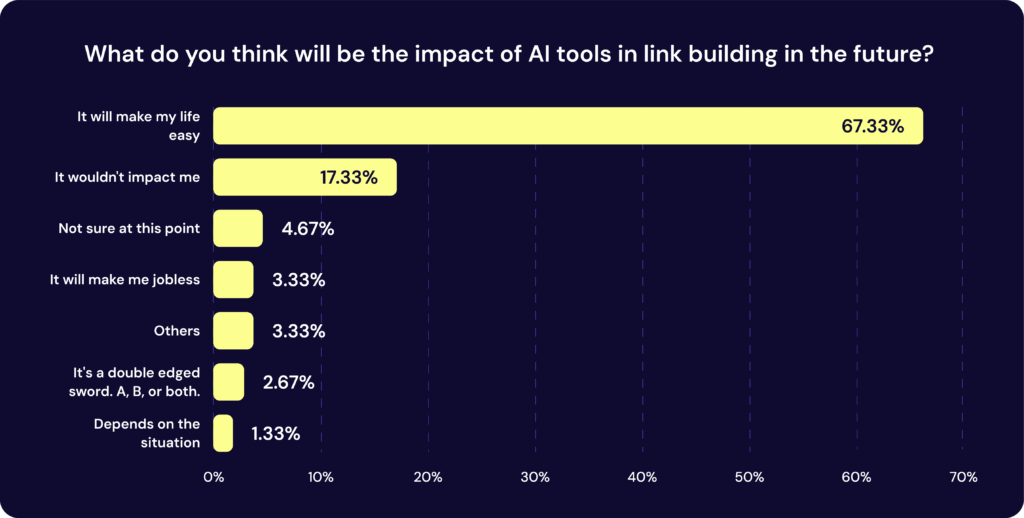
1. User Intent: Aligning Content with Searcher Intent
Search engines are now better than ever at understanding what users are looking for when they type a query. This shift emphasizes the importance of creating content that directly addresses user intent, rather than simply targeting keywords.
Why User Intent Matters
- Improved Rankings : Google rewards content that satisfies searcher intent by ranking it higher.
- Better Engagement : When users find exactly what they’re searching for, they spend more time on your site, reducing bounce rates.
- Higher Conversion Rates : Aligning content with intent ensures you attract the right audience—those more likely to convert.
How to Optimize for User Intent
- Identify Intent Types : Classify queries into informational, navigational, transactional, or commercial intent.
- Example : A query like “how to build backlinks” indicates informational intent, while “buy SEO tools” signals transactional intent.
- Create Targeted Content : Develop content formats that match the intent behind each query. For instance:
- Blog posts and guides for informational queries.
- Product pages and landing pages for transactional queries.
- Leverage Tools : Use tools like Ahrefs Keyword Explorer or Google’s “People Also Ask” feature to uncover intent-driven keywords.
Case Study: HubSpot’s Success with Intent-Based Content
HubSpot optimized its blog content to address specific pain points of its target audience (e.g., “how to write a resume”). By focusing on user intent, HubSpot increased organic traffic by 30% and secured high-quality backlinks from authoritative websites.
2. Sustainability: Building Long-Term Relationships Rather Than Quick Wins
In 2025, sustainable link-building practices will take center stage. Instead of chasing short-term gains through manipulative tactics, businesses will focus on fostering genuine relationships with influencers, publishers, and industry leaders.
Why Sustainability is Key
- Longevity : Sustainable links remain valuable over time, unlike low-quality links that may disappear or harm rankings.
- Trust and Authority : Building relationships enhances brand credibility and fosters trust among partners.
- Adaptability : Sustainable strategies are less vulnerable to algorithm updates.
Strategies for Sustainable Link Building
- Collaborate with Influencers : Partner with influencers in your niche to co-create content that benefits both parties.
- Example : A fitness brand collaborates with a health blogger to create an eBook on workout routines, earning backlinks from the blogger’s audience.
- Guest Posting with Value : Focus on providing value to publishers rather than just securing a link.
- Reference : Learn more about ethical guest posting strategies here .
- Content Partnerships : Work with complementary brands to produce joint webinars, podcasts, or research studies.
Chart: Short-Term vs. Long-Term Link Building ROI
| Strategy | Short-Term Gains | Long-Term Benefits |
|---|---|---|
| Manipulative Tactics | High (initial) | Low (penalties) |
| Relationship Building | Moderate | High |
3. Transparency: Ethical Practices Will Take Precedence Over Manipulative Tactics
Google’s algorithms are increasingly adept at detecting manipulative link-building tactics, such as buying links or participating in link schemes. In 2025, transparency will be non-negotiable for maintaining a strong online presence.
Why Transparency is Essential
- Avoid Penalties : Google penalizes sites engaging in unethical practices, leading to lost rankings and traffic.
- Build Trust : Transparent practices enhance your reputation among peers and customers.
- Future-Proof Your Strategy : Ethical link building ensures compliance with evolving search engine guidelines.
How to Practice Transparency
- Disclose Paid Collaborations : If you sponsor content, clearly label it as such to comply with FTC guidelines.
- Example : A beauty brand partners with a YouTuber for a product review but includes a “#ad” disclaimer.
- Focus on Natural Links : Create content so valuable that others want to link to it organically.
- Reference : Discover how to earn natural backlinks in this Ahrefs guide .
- Audit Your Backlink Profile : Regularly monitor your backlinks using tools like Ahrefs or SEMrush to identify and disavow toxic links.
Case Study: The Rise of White-Hat SEO
A small e-commerce store shifted from black-hat tactics (e.g., private blog networks) to white-hat strategies like creating shareable infographics and publishing original research. Within six months, their organic traffic grew by 45% , and they avoided penalties during a major Google update.
Conclusion
Link building and website authority are indispensable components of a successful SEO strategy in 2025. By staying ahead of trends, leveraging proven strategies, and focusing on quality over quantity, you can elevate your website’s rankings and establish lasting trust with both users and search engines.
For further reading, visit Ahrefs’ Link Building Guide and Link Building Strategies .
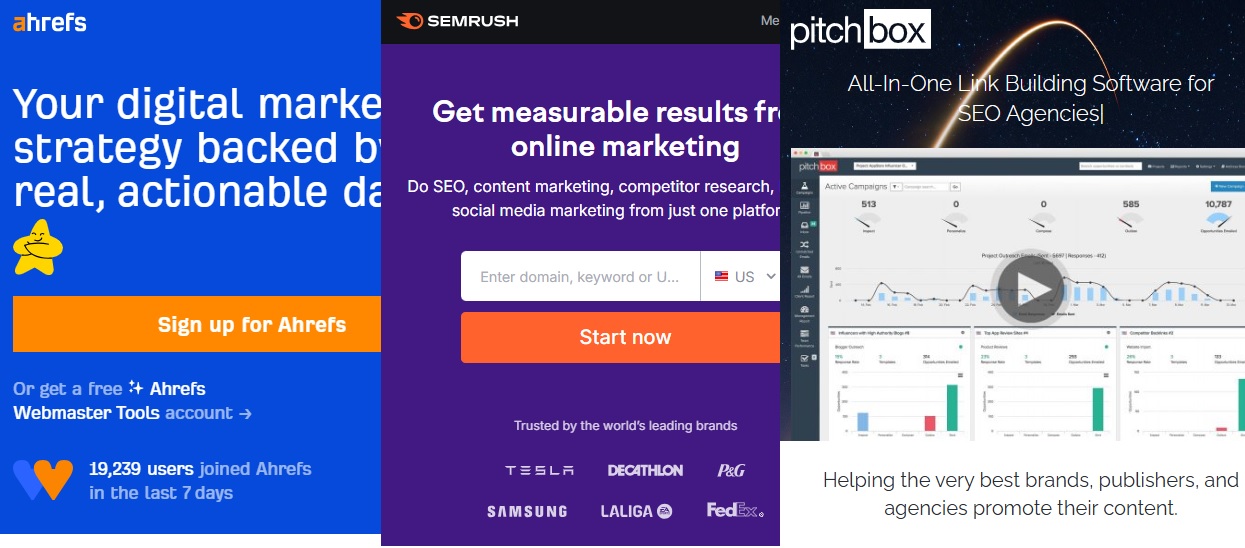
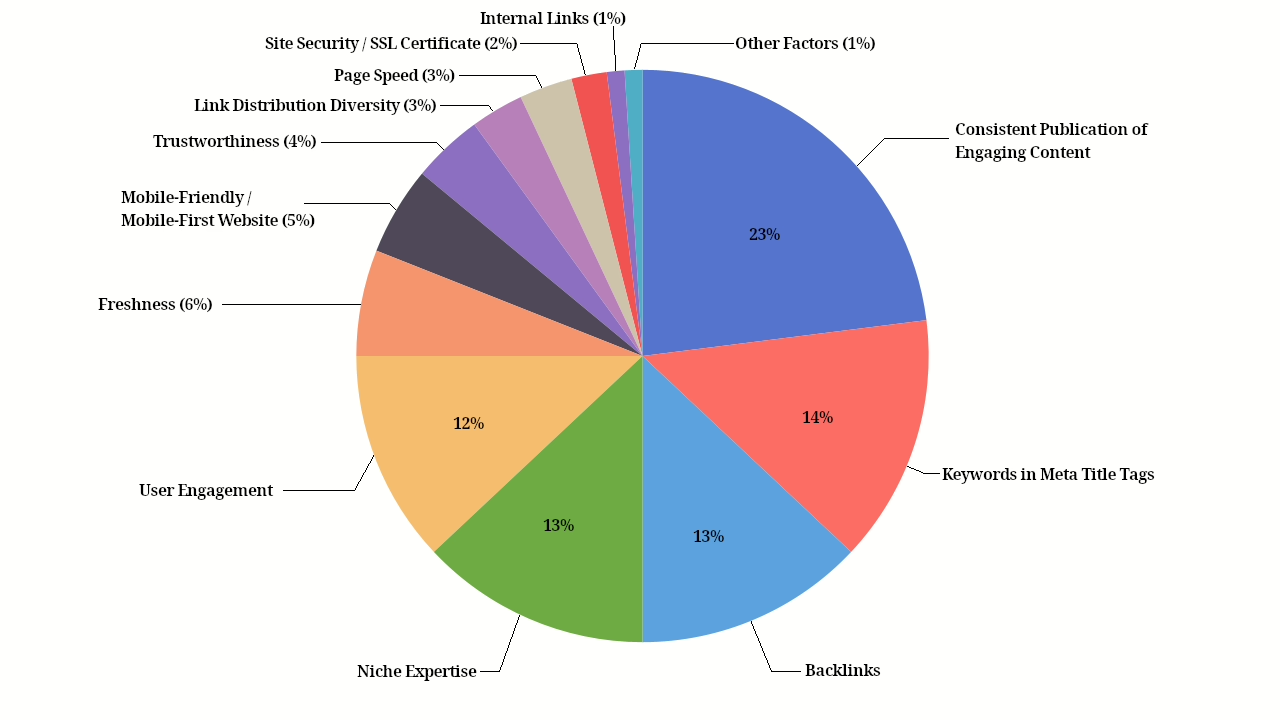
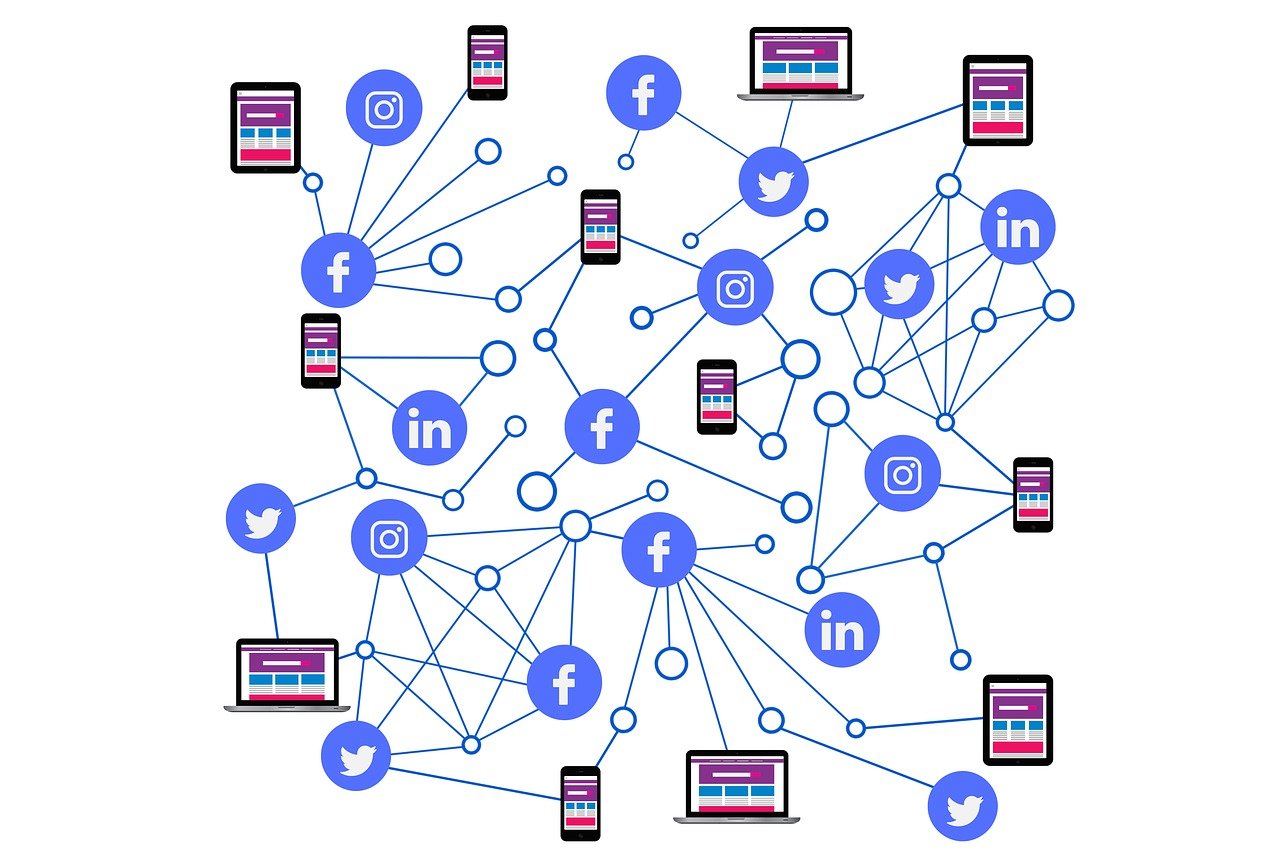
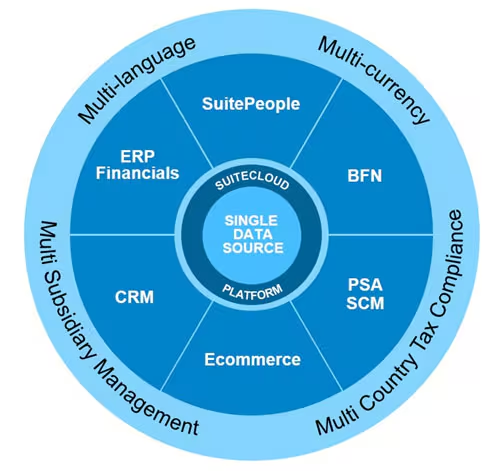
Post Comment